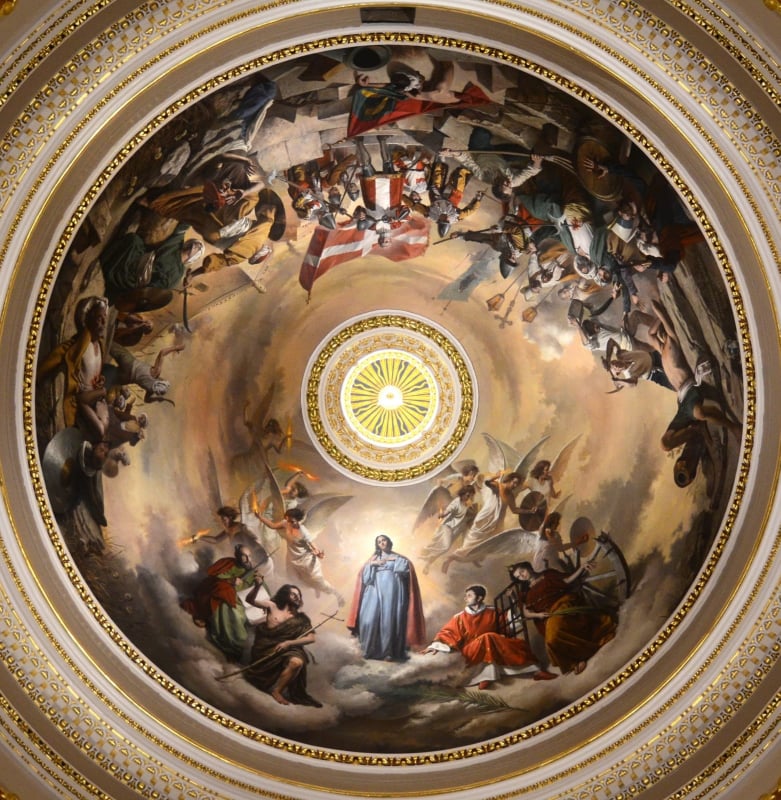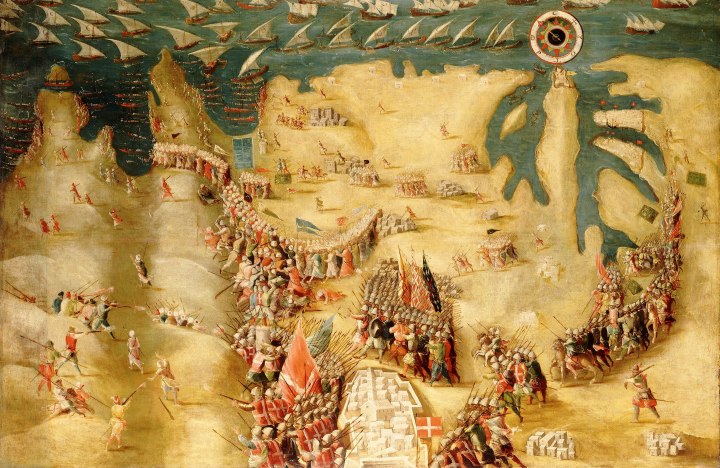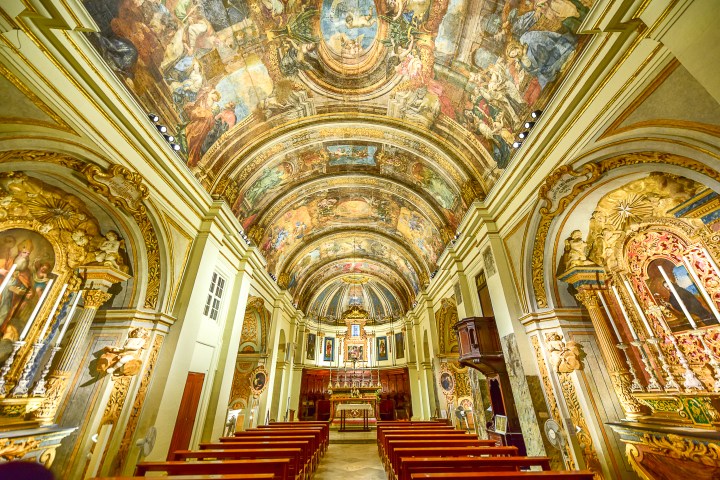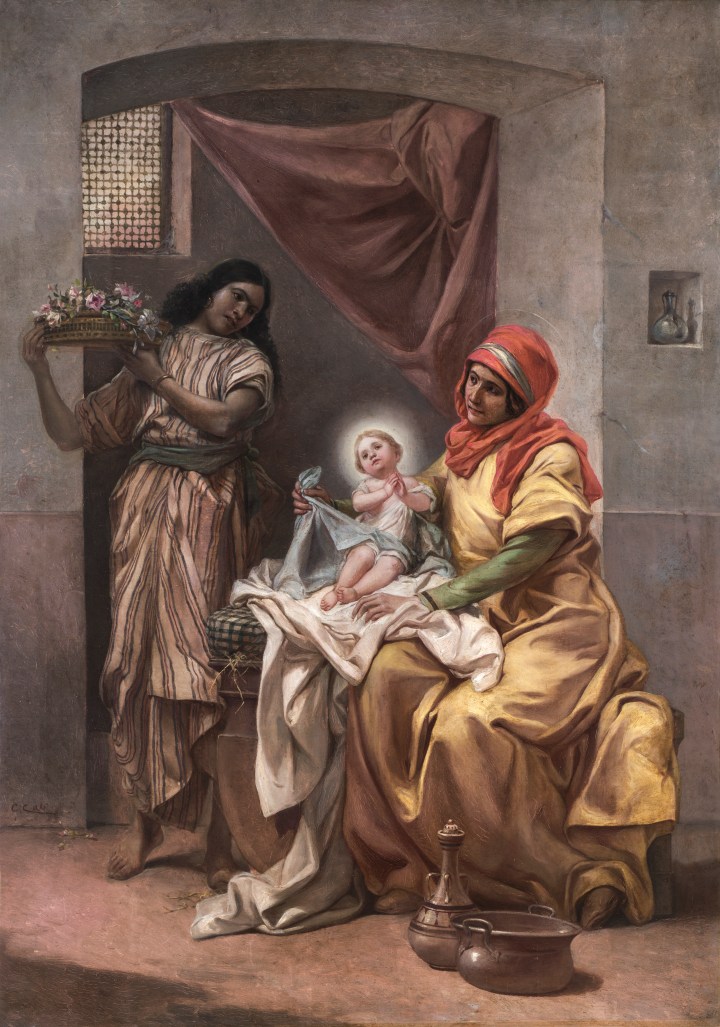From Aleteia
By Jean Pierre Fava
God has looked with favor on his servant Malta. The smallest of Christian principalities has an ancient devotion to this feast.
The celebration of the Nativity of the Blessed Virgin Mary in the Greek Church goes back to at least the 5th or 6th century. St. Romanus (490-556) composed a hymn for this feast day, while St. Andrew of Crete (660-740) delivered famous sermons on the Nativity of Our Lady. Many scholars are of the opinion that the feast originated after the Council of Ephesus (431), in which Our Lady was given the title “Theotokos” (God-bearer) — in Latin Mater Dei (Mother of God).
Certainly, this feast was introduced into the West by the Greeks, and by the 7th century, it was celebrated in Rome. Nevertheless, probably it was only in the 11th century that it became widely diffused in Western Christendom. Around 1241, it also received an octave by Pope Innocent IV.
Celebration of Mary’s birth in Malta
Throughout the Maltese Island’s millennial Christian history, the Archipelago has been dotted with shrines, collegiate basilicas, parishes, churches, chapels, and cave churches dedicated to the feast of the Nativity of Mary.
From the 4th century?
Indeed, the National Marian shrine in Mellieħa is also dedicated to the Nativity of Our Lady. The cave church of the national shrine stands out from the others because it holds a wall painting of the Virgin Mary called Hodegetria (the Virgin who shows the way). The Rollo document of 1436, of Bishop De Mello, clearly states that a parish already existed in Mellieħa.
Pope St. John Paul II went to this Sanctuary to pray before the Virgin during his Pontifical visit in 1990. It is very probable that Christian practice on this site and the cave church vastly predates the present 13th-century fresco. A tradition maintains that in 409, a number of Catholic bishops visited the hallowed grotto and consecrated it as a church. Indeed, the ceiling mural is a late depiction of this event.
One has to also keep in mind that in Malta there was great Byzantine influence from the 4th to circa the 8th century, so most probably, the Nativity of Mary was already celebrated during this period.
The Great Siege and the triumph of Mary
On May 18, 1565, an armada of over 200 warships was sighted off Malta. An invading Ottoman Expeditionary Force estimated to be 30,000 strong landed, and soon siege preparations began. However, the Knights of Saint John and the Maltese prevailed against all odds and after a terrible siege of the Grand Harbour defensive lines, the greatest super-power of the day abandoned the siege, accepted defeat and sailed back home. On September 8, 1565, the hitherto invincible Ottoman Turkish Army of Suleyman the Magnificent (1494-1566) lifted the Siege of Malta’s chief port and returned home, defeated and in disgrace. This day happened to be the feast of the Blessed Virgin’s Nativity.

Maltese piety was quick to identify the trail of divine providence that occurred specifically on the feast of the Nativity and attribute it to the intercession of the Blessed Virgin. How could it be otherwise when the enemy had called it a day on this great feast of Our Lady? Even Grand Master Jean Parisot de la Valette (1495-1568) himself didn’t believe this was a coincidence! In fact, during the heroic struggle to defend the Holy Faith and Western Christendom, he found spiritual solace and prayed for guidance before the 12th-century Byzantine Icon, known as Damaskinì (Our Lady of Damascus or La Damascena). This Icon was brought here by the Greek community fleeing from Turkish-occupied Rhodes in 1530.
On the lifting of the Siege on that fateful day of September 8, Grand Master la Valette laid down his hat and his sword on the altar steps as votive offerings to show his gratitude and thanksgiving to Our Lady for delivering him, the defenders, and the whole of Western Christendom from the invading Ottomans.

A mother to turn to, in drought and plague
La Valette’s hat and sword are still treasured in the Chapel of Our Lady of Damascus within the precincts of the Oratory of the Nunnery of St. Joseph in Vittoriosa (The Victorious City). Before the founding of Valletta, La Damascena was venerated in the small Church of St. Catherine in the City called the Borgo (the “Burg”par excellance). Today, La Damascena is venerated in the Greek-rite Catholic Church in Valletta. The City of Borgo was renamed Vittoriosa, and its sister city of Senglea took the title of Invicta (Undefeated). The citizens of Senglea also erected a church in honour of the Virgin’s Birth to serve as a memorial of her intervention to help them achieve this memorable victory.
The parish church of Senglea was elevated to a Marian Sanctuary on September 4, 1921, when the Bishop of Malta coronated the head of its cherished titular statue, a miraculous effigy, with a gold crown studded with precious stones.
Two events registered in the parish archives serve to illustrate the high esteem and profound veneration with which the statue is held. The first occurred in 1718, when the statue was carried in a penitential pilgrimage to the sanctuary of Our Lady Tal-Ħlas in Qormi. This was done following a decree issued by the Bishop after a long period of disastrous drought. He instructed all the confraternities of Malta to hold a general votive procession. While the pilgrimage was on its way back to Senglea, it began to drizzle, and then started raining heavily.
The second instance happened in 1813 when a deadly plague was raking Malta. The Senglea chapter solemnly vowed that if the town was spared from this affliction, it would perpetually hold three votive processions, one of which was that with the Marian effigy, to be held annually on September 8. Through divine protection and with Our Lady’s intercession, Senglea was spared, and the pledge has been observed ever since.

A triumph of the little ones
Grandmaster de la Valette, the Knights, and the Maltese had achieved what was considered an impossible victory over an implacable enemy which had reached the gates of Vienna. This victory was a miracle, a heavenly sign to resist, a grace granted by the Blessed Virgin to her devout children who were taking on the mightiest military machine of the age. The Osmanli Victor of Rhodes, the Balkans and Hungary was forced to retreat defeated and humiliated by the smallest of all Christian principalities. Immediately, the Maltese and the Knights added another title to their Heavenly Mother and began to call her ‘Our Lady of Victory.’ (Maltese: Il-Madonna tal-Vitorja).
The great victory of the Knights and the Maltese over the mighty Turkish Empire was decisive not only for the safety of the Order and of Malta but also for the whole of Western Christendom. That is why in all the churches of Western Europe, including the Protestant ones, bells were rung, and prayers were said thanking the Lord and his Blessed Mother for granting victory to the Maltese over the Ottomans. Christendom, both Protestant and Catholic, gave a sigh of relief when the Turks failed to penetrate the gallant Christian Fortress, which stopped the Turkish push into the Western Mediterranean and Southern Europe.
The Birth of Valletta
On March 28, 1566, La Vallette laid the foundation stone of his new city, which later was given his name to honor the great war leader – Valletta. He ordered that the first building in his city was to be a church (also to fulfil the people’s desire and demands), which was erected on the foundation stone of the Fortress City. The devout Grand Master financed from his own pocket the construction of this Church.
It was dedicated to the Nativity of the Blessed Virgin, and since it was on the 8th of September that the Turks lifted their Siege, it was most appropriate to hail the Madonna as Our Lady of Victory.
On August 21, 1568, Grand Master de la Valette went to meet the Lord, after suffering a severe sunstroke while hunting at St Paul’s Bay. Originally, he was buried in his beloved church, but later his remains were buried in the crypt of St John’s Conventual Church (St. John’s Co-Cathedral).

Not one victory, but two
During the Second World War, in a night of heavy bombing by the Axis on the Grand Harbour area, a blast from a bomb that destroyed the nearby Royal Opera House also damaged the ceiling of the church. It seemed that only a miracle had saved the ancient church.
The Maltese felt and believed that it was no coincidence that Italy surrendered to the Allies on the Feast of Our Lady of Victory on September 8, 1943. And so, they began to address the Church not as of Our Lady of Victory but as Our Lady of Victories. Malta’s two most terrible Sieges were lifted on the Feast of the Nativity of Our Lady!
In this small church, one can find a Byzantine Icon of unknown origin, with an engraved silver ornament, reading Our Lady of Victory. Tradition maintains that it was donated to the church by Grand Master Alof de Wignacourt between 1601 and 1622. In 1716, the Maltese artist Alessio Erardi was commissioned to paint the vault with magnificent scenes, depicting scenes from the life of the Blessed Virgin. The Titular Painting of the main altar piece depicts the Birth of the Blessed Virgin and the original is still there. In the year 2000, the Valletta Rehabilitation Committee and the NGO Din l-Art Ħelwa, campaigned for a restoration of the neglected old church to its former pristine splendor.
The church is an architectural gem full of spiritual, historical, artistic and cultural treasures. On September 8, 2011, the Government entrusted the church to the care of Din l-Art Ħelwa (The National Trust of Malta). Visitors who visit the Church are impressed and agree that it has been restored to its original glory.

The Birth of the Blessed Virgin Mary painted by the prodigious Giuseppe Cali in 1914. It is one of eight paintings by the same author found in the Old Parish Church of Għajnsielem, Gozo, inaugurated and dedicated in 1820 | Courtesy of the Għajnsielem Parish Church and Fr. Frankie Bajada | Photo by Joseph Borg.

No comments:
Post a Comment
Comments are subject to deletion if they are not germane. I have no problem with a bit of colourful language, but blasphemy or depraved profanity will not be allowed. Attacks on the Catholic Faith will not be tolerated. Comments will be deleted that are republican (Yanks! Note the lower case 'r'!), attacks on the legitimacy of Pope Leo XIV as the Vicar of Christ, the legitimacy of the House of Windsor or of the claims of the Elder Line of the House of France, or attacks on the legitimacy of any of the currently ruling Houses of Europe.